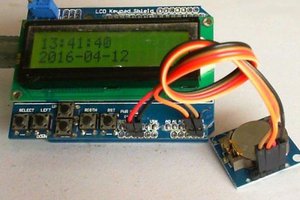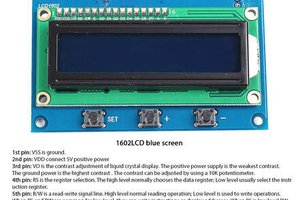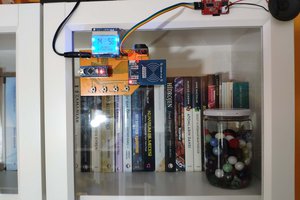There are two servo activated levers that press the buttons on the front of the water cooler, thus dispensing water. You can set the fill time for both hot and cold water by turning the dimmers which will change the time (in seconds) on the number module (set in values mode). Then, just press the button to start the pouring process. As the the water pours, the number module will count down each second until the time is up and then disengage the servos. The number module can be used for both setting the clock and counting down the time because it's not connected directly to the dimmer. Instead, it's connected to the Arduino module. The Arduino reads the voltage coming in from the dimmer and then passes that value on to the number module. When you press the fill button, the Arduino stops reading the dimmer and instead decreases the voltage going to the number module by a set amount each second. Once the voltage has reached zero, the Arduino disengages the servo and sends a signal to the cloudBit telling it to log the event on Mr. Thristy's Diary.
Quantified Thirst
Meet Mr. Thirsty, our super smart datacollecting water cooler.
 littleBits
littleBits








 eDIY
eDIY


 kutluhan_aktar
kutluhan_aktar